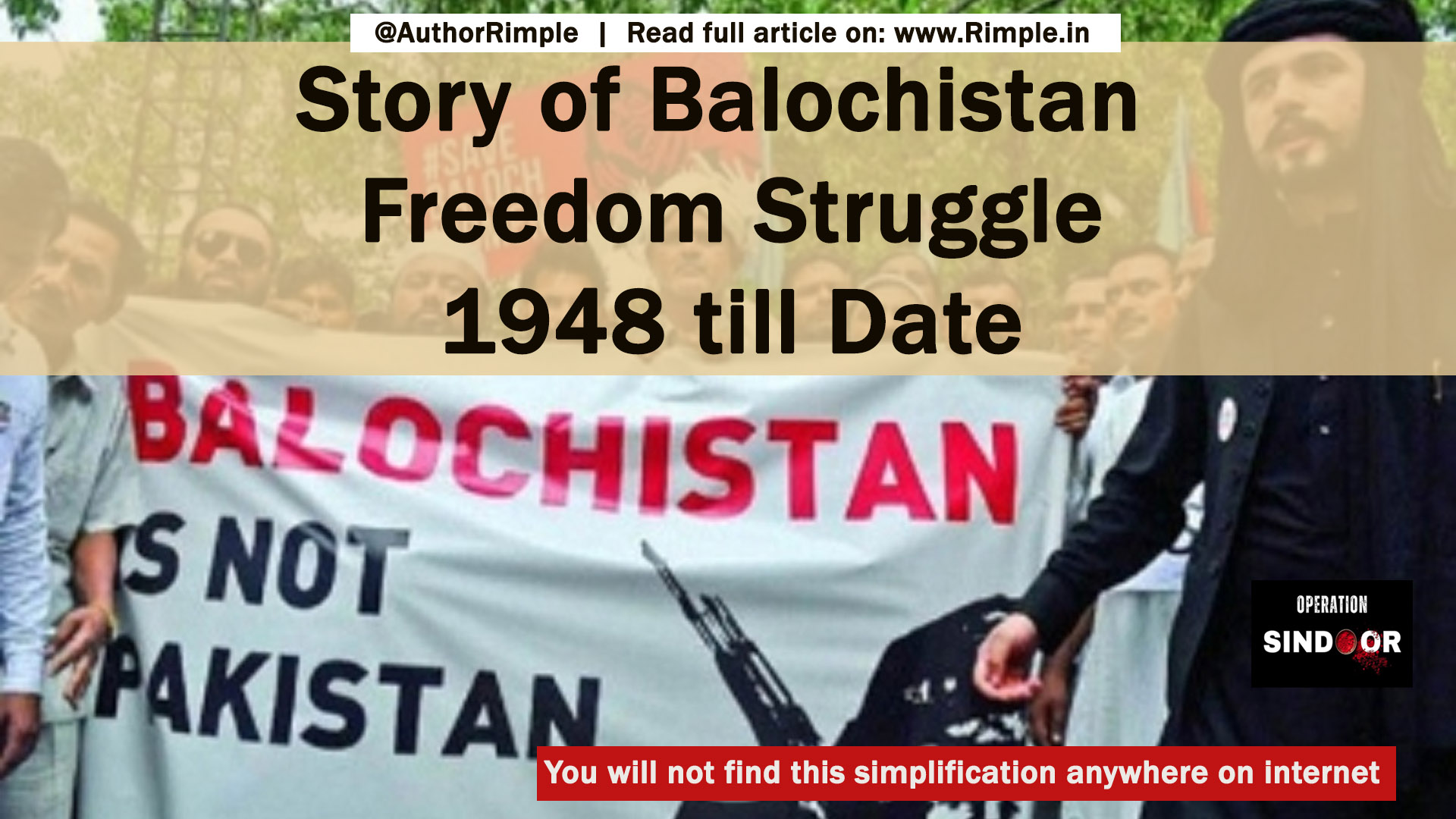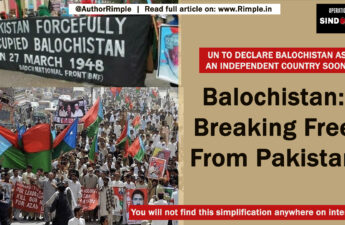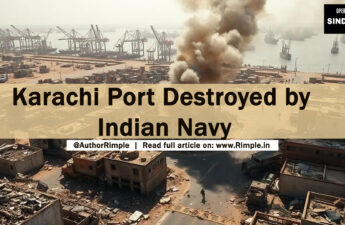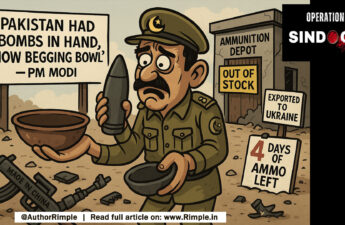Balochistan, Pakistan’s largest province, is a land of rugged mountains, vast deserts, and a coastline that stretches along the Arabian Sea. It’s a place rich in natural resources like gas, oil, and minerals, yet it remains one of the poorest and least developed regions in Pakistan. For decades, the Baloch people have been fighting for freedom, driven by a deep sense of betrayal, neglect, and a desire to control their own destiny. This article tells the story of their struggle, from its roots in 1947 to the turbulent events up to April 22, 2025, including the Pahalgam attack in Indian-administered Kashmir. We’ll explore why the Baloch want independence, how they’ve sought India’s support, and who the key figures are in this long fight for freedom—all in simple, clear language.
The Seeds of Struggle: 1947 and the Broken Promise
When British colonial rule ended in 1947, the Indian subcontinent was split into India and Pakistan. Balochistan, a region with a distinct cultural and historical identity, was made up of four princely states: Kalat, Kharan, Las Bela, and Makran. These states had a choice—to join India, join Pakistan, or stay independent. The Khan of Kalat, Mir Ahmed Yar Khan, dreamed of an independent Balochistan. On August 11, 1947, Kalat declared independence, and for a brief moment, it seemed like the Baloch would have their own nation.
Muhammad Ali Jinnah, Pakistan’s founder, had initially supported Kalat’s independence. In a meeting in Delhi on August 4, 1947, with British Viceroy Lord Mountbatten and India’s Jawaharlal Nehru, Jinnah backed the Khan’s decision. But soon, things changed. Pakistan, eager to secure its borders and resources, pressured Kalat to join. By October 1947, Jinnah urged the Khan to merge with Pakistan, but the Khan refused, seeking help from India and other countries. India, focused on its own challenges like Kashmir, didn’t offer support.
With no international backing and facing military threats, the Khan was cornered. In March 1948, Pakistan sent troops led by General Akbar Khan to occupy Balochistan. On March 27, 1948, the Khan signed the Instrument of Accession, merging Kalat with Pakistan. This forced annexation was seen as a betrayal by many Baloch, especially since Jinnah, once a supporter, had turned against them. The seeds of rebellion were sown.
Waves of Rebellion: 1948–1977
The Baloch didn’t accept Pakistan’s control quietly. Over the decades, their fight for freedom grew through a series of uprisings, each fueled by grievances over political exclusion, economic neglect, and cultural suppression.
First Uprising (1948)
Right after the annexation, Prince Abdul Karim, the Khan’s brother, led a revolt against Pakistan. He hoped for support from Afghanistan, but when that didn’t come, the rebellion fizzled out. This early failure showed the Baloch’s determination but also their isolation.
Second Uprising (1955–1959)
In 1955, Pakistan introduced the “One Unit Scheme,” merging its western provinces, including Balochistan, into a single administrative unit to counter East Pakistan (now Bangladesh). This erased Balochistan’s identity and gave more power to Punjabis, Pakistan’s dominant ethnic group. Nawab Nowroz Khan, a Baloch leader, launched a guerrilla war. He surrendered in 1959 after Pakistan promised amnesty, but the government broke its word, executing his men. This deepened Baloch distrust.
Third Uprising (1963–1969)
Led by Sher Muhammad Bijrani Marri, this rebellion demanded revenue sharing from Balochistan’s gas reserves, the end of the One Unit Scheme, and the release of Baloch prisoners. It ended in 1969 with a general amnesty, and in 1970, Pakistan scrapped the One Unit policy, making Balochistan a separate province. But the underlying issues—neglect and exploitation—remained.
Fourth Uprising (1973–1977)
The 1970s saw the bloodiest Baloch rebellion yet. After Bangladesh’s independence in 1971, Baloch leaders like Akbar Khan Bugti demanded more autonomy. In 1973, Pakistan’s Prime Minister Zulfikar Ali Bhutto dismissed Balochistan’s elected government, accusing it of conspiring with foreign powers. He launched a massive military operation, deploying 80,000 troops against 55,000 Baloch fighters. The conflict killed thousands and pushed many Baloch into exile, including to Afghanistan. This era saw the rise of the Balochistan Liberation Army (BLA), a militant group that would become a key player in the freedom movement.
Why the Baloch Want Freedom: The Core Reasons
The Baloch fight for independence isn’t just about history—it’s driven by ongoing political, economic, geographical, and cultural factors that make them feel like outsiders in Pakistan.
Political Exclusion
Balochistan has little say in Pakistan’s government. Despite being 44% of Pakistan’s landmass, it has only 17 of 342 seats in the National Assembly. The Pakistan Army, dominated by Punjabis, controls the province’s politics, often rigging elections to install pro-military leaders. Baloch nationalists, like the National Awami Party in the 1970s, have been sidelined or accused of treason. Forced disappearances and extrajudicial killings of activists have fueled resentment.
Economic Exploitation
Balochistan is rich in natural gas, oil, coal, copper, and gold, yet it’s Pakistan’s poorest province. The Sui gas field, discovered in 1952, supplies much of Pakistan’s energy, but Balochistan gets little revenue. The China-Pakistan Economic Corridor (CPEC), launched in 2015, promised development but has mostly benefited outsiders. Gwadar Port, a CPEC flagship, has displaced local fishermen and brought few jobs for Baloch. The province’s GDP per capita is just $710, and poverty rose from 48% in 2001 to 58% in 2017. Locals feel their resources are being stolen.
Geographical Isolation
Balochistan’s vast, sparsely populated terrain (13 million people across 374,190 square kilometers) makes it hard for the government to provide services like schools or hospitals. Its borders with Iran and Afghanistan add strategic importance, but also make it a target for military control rather than development. The Baloch feel their land is used as a geopolitical pawn, not a home.
Cultural Suppression
The Baloch have a distinct language, culture, and tribal structure, different from Pakistan’s Punjabi-dominated identity. The government has tried to impose a uniform “Pakistani” identity, sidelining Baloch traditions. This cultural erasure, combined with settler policies that bring non-Baloch to the province, has sparked fears of becoming a minority in their own land.
Human Rights Abuses
The Pakistan Army’s tactics—forced disappearances, torture, and mass arrests—have radicalized many Baloch. Activists like Mahrang Baloch, who lost her father to custodial killing, lead protests against these abuses. The 2009 killing of leaders like Ghulam Mohammed Baloch sparked riots, showing how state violence fuels the insurgency.
The Fifth Insurgency: 2003–2025
The current wave of rebellion, starting around 2003, is the most organized and deadly. It began after years of neglect and intensified in 2006 when Pakistan’s military killed Nawab Akbar Bugti, a prominent Baloch leader. The BLA, led initially by Balach Marri (killed in 2007), became the face of the armed struggle.
Key Developments
Formation of BRAS (2018): The Baloch Raaji Aajoi Sangar (BRAS) allied groups like the BLA, Baloch Liberation Front (BLF), and Baloch Republican Army (BRA). This alliance coordinated attacks, targeting Pakistani forces and CPEC projects.
Escalation of Tactics: The BLA adopted sophisticated methods, including suicide bombings and IEDs. In 2022, they launched coordinated bomb attacks in multiple cities. In 2024, Operation Dara-e-Bolan saw 385 militants occupy urban areas, showing their growing strength.
Jaffar Express Hijacking (March 2025): On March 11, 2025, BLA militants hijacked a train with 400 passengers, demanding the release of Baloch prisoners. The military operation to free hostages killed 21 civilians and 33 insurgents, highlighting the conflict’s brutality.
Key Freedom Fighters
- Nawab Akbar Bugti (died 2006): A tribal leader who demanded autonomy and resource control. His killing sparked the current insurgency.
- Balach Marri (died 2007): Early BLA leader, son of Nawab Khair Bakhsh Marri, who pushed for independence.
- Brahumdagh Bugti: Grandson of Akbar Bugti, leads a BRA faction from exile, denying militancy but inspiring fighters.
- Hyrbyair Marri: BLA leader since 2007, operates from exile, possibly in Afghanistan or Europe.
- Mahrang Baloch: A young woman leading peaceful protests, highlighting human rights abuses.
- Gulzar Imam: BRA commander, led a faction after a 2018 split, gaining support locally.
- Jeeyand Baloch: BLA spokesperson, vocal about targeting Pakistani forces as “mercenaries.”
The India Connection: Support and Solidarity
The Baloch have long looked to India for support, seeing it as a counterweight to Pakistan. India’s involvement, however, is complex and often exaggerated by Pakistan to discredit the Baloch movement.
Baloch Appeals to India
- In 1947, the Khan of Kalat sought India’s help to maintain independence, but India, preoccupied with Kashmir, didn’t respond.
- Since the 2000s, Baloch leaders like Brahumdagh Bugti have sought asylum and platforms in India. In 2016, Bugti expressed gratitude for India’s moral support.
- Baloch activists attend events in India, like conferences in New Delhi, to highlight their cause. They see India as a democratic ally that can amplify their voice globally.
India’s Role
India’s support has been mostly diplomatic and(streaming) and moral. In 2016, Prime Minister Narendra Modi criticized Pakistan’s human rights abuses in Balochistan during an Independence Day speech, raising global awareness.
- Kulbhushan Yadav Case (2016): Pakistan claimed to have arrested an Indian naval officer, Kulbhushan Yadav, accusing him of supporting Baloch insurgents. India denied he was a spy, saying he was a businessman abducted from Iran. The case fueled Pakistan’s narrative of Indian interference, though evidence is thin.
- India provides a platform for Baloch voices, like hosting activists, but direct material support (arms, funding) lacks clear proof. India’s focus remains on countering Pakistan’s support for Kashmir militants, not escalating the Baloch conflict.
Baloch Support for India
The Baloch often express solidarity with India, especially over Kashmir. They condemn Pakistan’s role in Kashmiri militancy and support India’s stance on terrorism. For example, Baloch leaders denounced the 2019 Pulwama attack in Kashmir, blaming Pakistan-based groups.
The Pahalgam Attack (April 22, 2025)
On April 22, 2025, militants attacked tourists in Baisaran Valley near Pahalgam, Indian-administered Kashmir, killing 26 people, mostly Hindu tourists. The Resistance Front (TRF), linked to Pakistan-based Lashkar-e-Taiba, initially claimed responsibility but later denied it. Indian authorities blamed Pakistan, citing digital traces to Muzaffarabad and Karachi. Pakistan’s Deputy PM Ishaq Dar controversially called the attackers “freedom fighters,” escalating tensions.
The Baloch response was swift. Leaders like Hyrbyair Marri condemned the attack, accusing Pakistan of hypocrisy—supporting Kashmiri militants while labeling Baloch fighters as terrorists. The BLA’s Jeeyand Baloch reiterated that their fight is against Pakistan’s military, not civilians, distancing themselves from the Pahalgam attack’s tactics. This stance aligns with their broader narrative of supporting India’s fight against Pakistan-sponsored terrorism
Connecting the Dots: A Unified Struggle
The Baloch struggle is tied to broader regional dynamics. Pakistan’s support for militancy in Kashmir, as seen in attacks like Pahalgam, mirrors the state repression Baloch face—forced disappearances, military operations, and economic neglect. The Baloch see parallels with Kashmiris under Indian rule, but their public support for India stems from a shared enemy: Pakistan’s military establishment. While direct evidence of India arming Baloch rebels is scarce, Pakistan’s accusations (e.g., the Yadav case) keep the narrative alive, deflecting from Baloch grievances.
The Baloch also draw inspiration from global movements. The 1971 Bangladesh liberation, aided by India, is a model for what international support could achieve. The Baloch Yakjehti Committee’s protests, led by figures like Mahrang Baloch, echo non-violent resistance elsewhere, while the BLA’s militancy reflects the desperation of a people with few options.
The Road Ahead
By April 2025, Balochistan’s fight for freedom is at a critical juncture. The Jaffar Express hijacking and BLA attacks, like the May 2025 IED blasts killing 14 soldiers, show the insurgency’s growing audacity. Yet, Pakistan’s military response—scorched-earth tactics—only fuels resistance. Political voices, like Maulana Fazal-ur-Rehman, warn that parts of Balochistan could declare independence, though international recognition is unlikely without major geopolitical shifts.
The Baloch want more than autonomy—they seek self-determination, control over their resources, and an end to Punjabi dominance. India’s moral support gives them a voice, but their isolation (no contiguous border with India, limited Western interest) keeps them vulnerable. The Pahalgam attack, while unrelated to Baloch militancy, underscores the regional stakes: Pakistan’s alleged double game—backing Kashmiri militants while crushing Baloch aspirations—keeps South Asia on edge.
For the Baloch, the fight is personal. From the Khan of Kalat’s betrayal in 1948 to Mahrang Baloch’s protests in 2025, it’s a story of a people refusing to be erased. Their message to the world, echoed in India and beyond, is simple: “We are not terrorists. We are fighting for our home.”
Note: This article just gives you a brief history. Today there’s a latest update where UN may declare Balochistan as an independent country. In the next article, read about a big win for Balochistan and A BIG WIN FOR INDIA.
JAI HIND.
Also Read:





